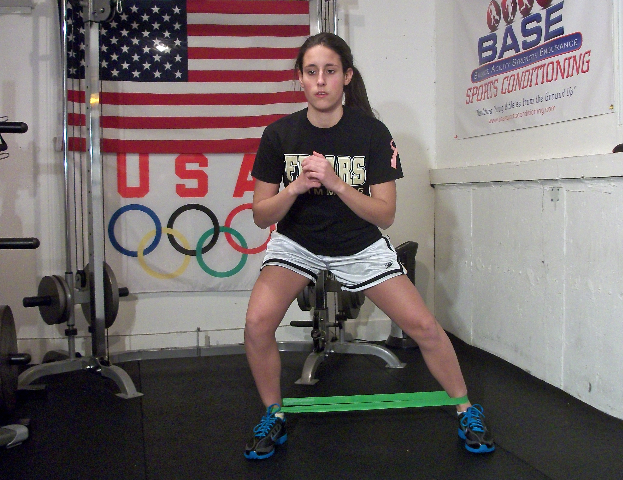There is now a compelling body of scientific evidence that resistance training by children and adolescents can have positive effects on health and fitness and enhance sports performance.
Adapting the official statement of the UK Strength and Conditioning Association on youth resistance training, an international team of experts from the fields of pediatric exercise science, pediatric medicine, physical education, strength and conditioning and sports medicine has now published a consensus statement with comprehensive guidelines on youth resistance training (Lloyd RS, et al. 2014). The statement has been endorsed by 10 leading professional organizations within the fields of sports medicine, exercise science, and pediatrics.

Key points
The statement makes the following six key points:
- The use of resistance training by children and adolescents is supported, provided qualified professionals design and supervise training programs that are consistent with the needs, goals and abilities of younger athletes.
- Parents, teachers, coaches and healthcare providers should recognise the potential health and fitness-related benefits of resistance exercise for all children and adolescents. Youth who do not participate in activities that enhance muscle strength and motor skills early in life may be at increased risk for negative health outcomes later in life.
- Appropriately designed resistance training programmes may reduce sports-related injuries, and should be viewed as an essential component of preparatory training programmes for aspiring young athletes.
- Regular participation in a variety of physical activities that include resistance training during childhood and adolescence can support and encourage participation in physical activity as an ongoing lifestyle choice later in life.
- Resistance training prescription should be based according to training age, motor skill competency, technical proficiency and existing strength levels. Qualified professionals should also consider the biological age and psychosocial maturity level of the child or adolescent.
- The focus of youth resistance training should be on developing the technical skill and competency to perform a variety of resistance training exercises at the appropriate intensity and volume, while providing youth with an opportunity to par- ticipate in programmes that are safe, effective and enjoyable.
Commenting on the statement, Jennifer Weiss, MD, an orthopedic surgeon with the Southern California Permanente Medical Group at the Los Angeles Medical Center, said she was "impressed by the sensitivity of the authors to varying levels of experience and body awareness among children and adolescents. The concise numbered points in the summary are practical and easy to follow. The more that we learn about strength, especially of the core, the less busy we think we will keep the surgeons (present company included), and this is a wonderful thing. The acknowledgement of the psychosocial component to training at a young age is also important, as forming these healthy habits early in life give these developing athletes a great foundation."
Cautionary notes
While he viewed the statement as "very comprehensive," and could understand "why it was endorsed by so many organizations," physical therapist and certified strength and conditioning trainer Keith Cronin expressed concern that the number of qualified resistance training professionals might outstrip the demand. "Whenever something comes out on the topic of something athletes and coaches want to do more of, care is needed. The general public tends to take a small piece of information and it becomes a 'runaway train.' The concerns I have are that the number of qualified trainers to work with young athletes is in my opinion limited."
Cronin also said it was critical to emphasize a key message point of the statement: that, "in order to reduce the chances of non-functional overreaching or overtraining, and to allow natural growth processes to occur, resistance training should not simply be viewed as an additional training session within the overall youth training programme, but as an alternative commitment in place of sport-specific training sessions and/or competitive [games]." It is important that parents understand, Cronin said, that training "not add to the current volume of sports but to be a substitute." (see training frequency section below)
Exercise Selection
~ Five key variables:
- Technical ability
- Baseline fitness levels
- Level of coaching expertise
- Overall goal of the training program, and
- Availability of equipment.
~ Fundamentals of technical competency should be a priority at all times.
~ Child-size equipment (light barbells, small dumbbells or fixed machine weights) should be used to allow children and adolescents to properly and safely execute a movement with correct technique.
~ Range of exercises for beginners: For youth with minimal training and poor technical competency (e.g. low training age), a range of exercises should be employed designed to promote the development of muscle strength and enhance overall fundamental motor skill competency. Once a child can demonstrate appropriate technical competency, they can be introduced to more advanced exercises that challenge the child in terms of coordination and require greater levels and rates of force production.
~ Incorporate free weights after develop proper technique: Once bodyweight exercise technique (e.g. bodyweight squatting, lunging, pressing and pulling movements) is sufficiently developed, exercises with free weights should be incorporated into the training program.
~ Advance to dynamic exercises: For technically competent youth, dynamic qualities can be enhanced with multijoint (e.g. squatting), velocity-specific training in the form of free-weight resistance training (e.g. weightlifting and plyometrics)








